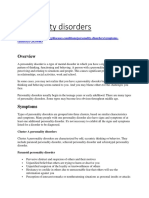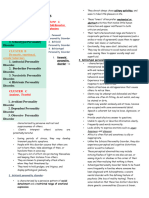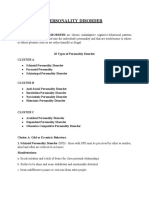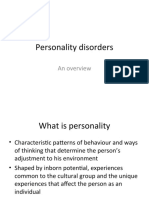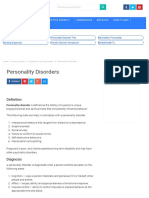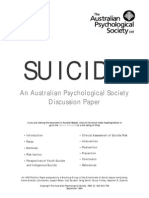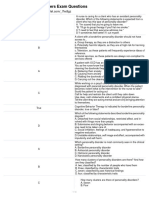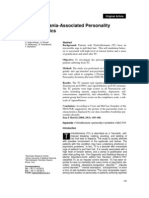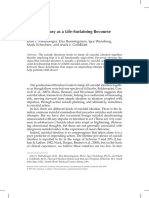0% found this document useful (0 votes)
125 views7 pagesChapter 7 Personality Disorders
This document provides an overview of personality disorders, including their definition, clusters, causes, and treatments. It defines personality disorders as maladaptive personality traits that begin by young adulthood and lead to distress or impaired functioning in three areas. It describes the three clusters (A, B, C) and lists the specific disorders within each cluster, such as paranoid personality disorder in Cluster A. It explains potential neurological, psychological, and social factors that can contribute to different personality disorders developing. It concludes by outlining some potential treatments, which vary depending on the specific disorder but may include medication, psychotherapy, and family or group therapy.
Uploaded by
Dessirie EnriquezCopyright
© © All Rights Reserved
We take content rights seriously. If you suspect this is your content, claim it here.
Available Formats
Download as PDF, TXT or read online on Scribd
0% found this document useful (0 votes)
125 views7 pagesChapter 7 Personality Disorders
This document provides an overview of personality disorders, including their definition, clusters, causes, and treatments. It defines personality disorders as maladaptive personality traits that begin by young adulthood and lead to distress or impaired functioning in three areas. It describes the three clusters (A, B, C) and lists the specific disorders within each cluster, such as paranoid personality disorder in Cluster A. It explains potential neurological, psychological, and social factors that can contribute to different personality disorders developing. It concludes by outlining some potential treatments, which vary depending on the specific disorder but may include medication, psychotherapy, and family or group therapy.
Uploaded by
Dessirie EnriquezCopyright
© © All Rights Reserved
We take content rights seriously. If you suspect this is your content, claim it here.
Available Formats
Download as PDF, TXT or read online on Scribd
/ 7





